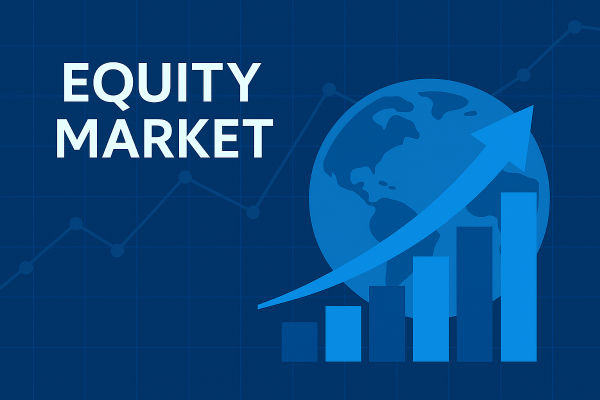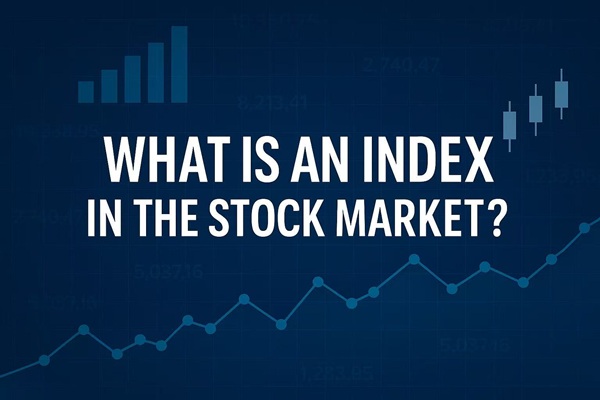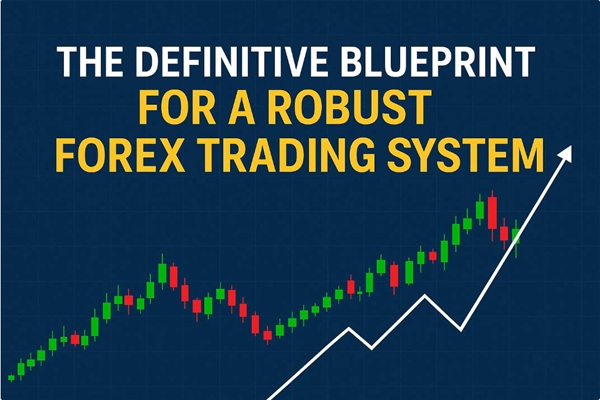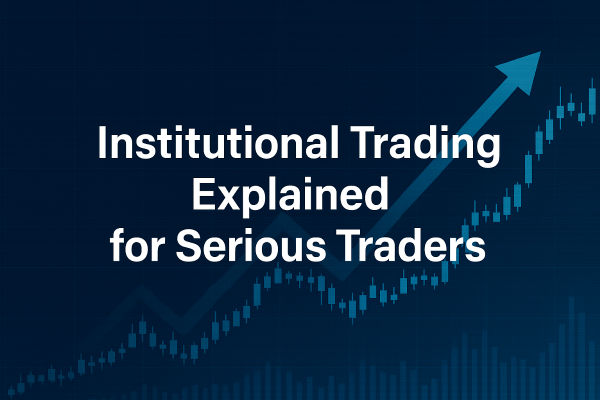The equity market is like the heartbeat of modern finance. Every second, prices rise and fall as companies seek funding and investors chase opportunity. For some, it is a place of dreams and fortunes, for others, a reflection of global confidence or fear. When the equity market thrives, economies tend to follow. When it falters, entire sectors feel the strain.
Understanding how the equity market works is not just for professionals or economists. It affects pensions, savings, and even job creation. Whether you hold shares directly or through an index fund, or simply follow the financial news, the equity market influences the value of your money and the pace of your nation’s growth.
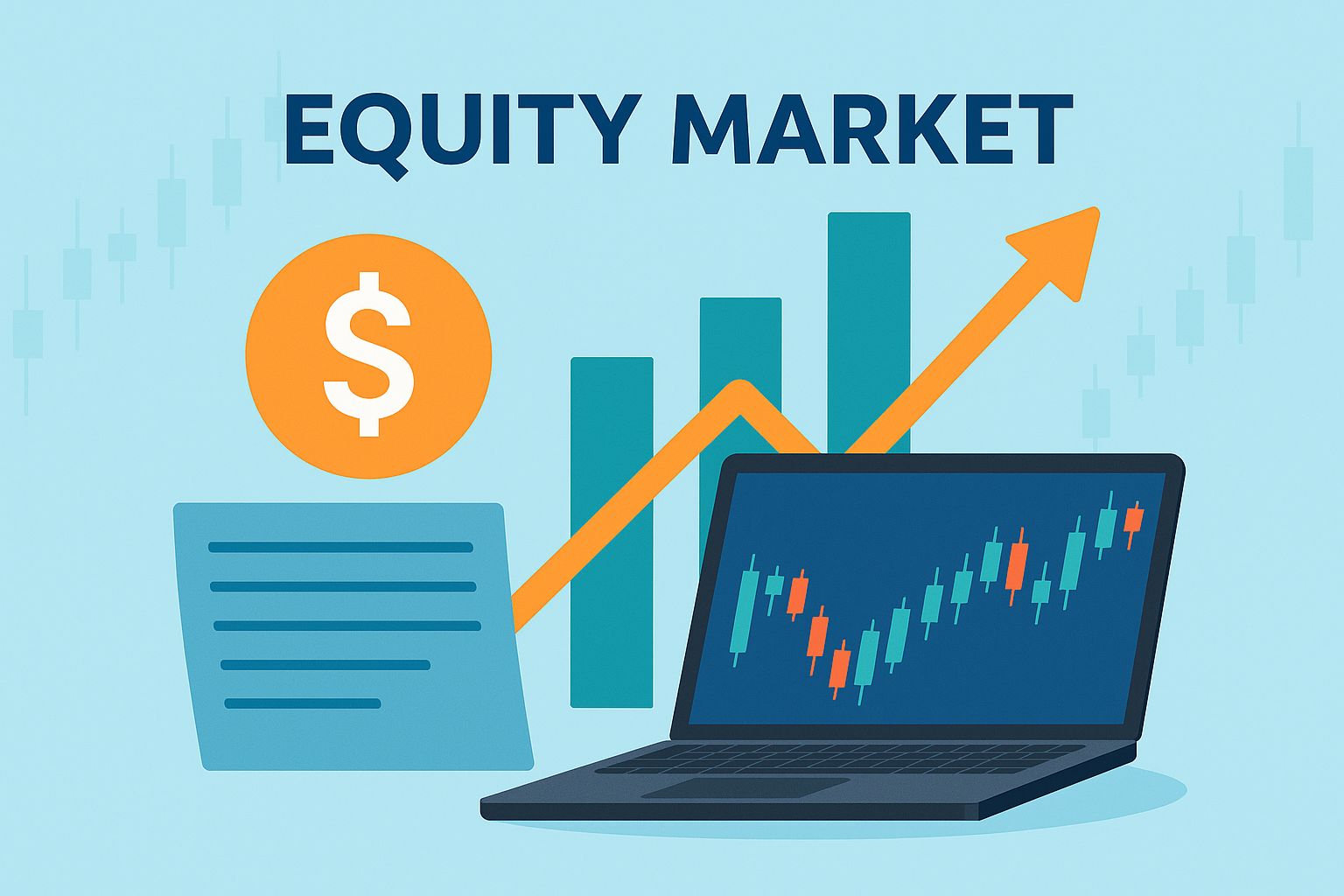
What Is the Equity Market?
The equity market is a platform where ownership of companies, represented by shares, is bought and sold. It is divided into two parts: the primary market, where companies raise new capital by issuing shares through an initial public offering (IPO), and the secondary market, where investors trade these shares among themselves after the listing.
Major global exchanges like the New York Stock Exchange (NYSE), NASDAQ, London Stock Exchange (LSE), and Tokyo Stock Exchange (TSE) facilitate trillions of dollars in transactions each year. As of mid-2025, global equity market capitalisation exceeds USD 120 trillion, roughly 120 percent of world GDP, according to World Bank and IMF estimates.
The equity market plays a vital role in channelling savings into productive investment. When investors buy shares, they fund companies that build infrastructure, develop technology, and hire workers, creating a feedback loop that drives economic expansion.
How the Equity Market Works
The process begins when a company decides to go public. It hires investment banks to underwrite its shares, sets an initial price range, and lists on an exchange. Once listed, the shares can be freely traded between investors, and prices are determined by supply and demand. If more people want to buy than sell, prices rise, and vice versa.
For example, when ARM Holdings went public again in September 2023, it raised USD 4.87 billion, marking one of the biggest tech IPOs in years. Its shares surged 25 percent on debut, reflecting strong demand from investors betting on semiconductor growth.
Behind the scenes, brokers, market makers, and regulators ensure smooth functioning. Brokers connect clients to exchanges, market makers provide liquidity by quoting buy and sell prices, and regulators such as the US SEC or UK FCA enforce transparency and fairness.
What Drives Stock Prices
Stock prices move based on a mix of fundamental, technical, and sentimental factors. The fundamentals include company earnings, revenue growth, and cash flow. Macroeconomic data such as inflation, GDP growth, and interest rate decisions from central banks also play a role.
In 2025, technology remains the dominant driver of equity market returns. The NASDAQ 100 has risen more than 12 percent year to date, supported by strong results from AI-related firms like Nvidia, Microsoft, and Amazon. Conversely, the energy sector has traded sideways due to lower oil prices and renewable transition policies.
Market sentiment, shaped by investor psychology and media coverage, adds another layer of influence. When optimism spreads, even weak earnings can lift stocks. During pessimistic periods, good news may not move prices much. This constant tension makes equity markets both challenging and fascinating.
Why the Equity Market Matters
The equity market does more than generate profits. It provides companies with a mechanism to raise capital without borrowing, enabling expansion and innovation. It also allows individuals to participate in the wealth created by businesses.
For governments, a healthy equity market signals economic confidence. Pension funds and sovereign wealth funds rely on stock performance to meet long-term obligations. In the UK alone, about £3 trillion in pension assets are directly tied to equity markets. Globally, nearly 60 percent of household wealth is linked to listed assets.
The market’s health also influences consumer confidence. When share prices rise, people feel wealthier and spend more, reinforcing economic momentum. When they fall sharply, spending tightens and recessions can follow, as seen during the 2008 financial crisis and briefly in March 2020 at the pandemic’s onset.
How Retail Investors Participate
For individuals, participation is easier than ever. Online brokers and mobile trading apps allow users to buy shares or exchange-traded funds (ETFs) with low fees and small minimums. Platforms such as Interactive Brokers, Freetrade, or TradingView have made markets globally accessible.
There are two main participation paths:
Long-term investing – building wealth gradually through diversified holdings.
Short-term trading – seeking profits from shorter market moves, sometimes within days or hours.
Investors also receive dividends, which are cash payments from company profits, and capital gains, earned when shares appreciate. Reinvesting these returns compounds growth over time.
For example, an investor who purchased £10,000 worth of the FTSE 100 index at the start of 2015 would have seen it grow to nearly £16,000 by 2025, including reinvested dividends, demonstrating the long-term compounding effect of equities.
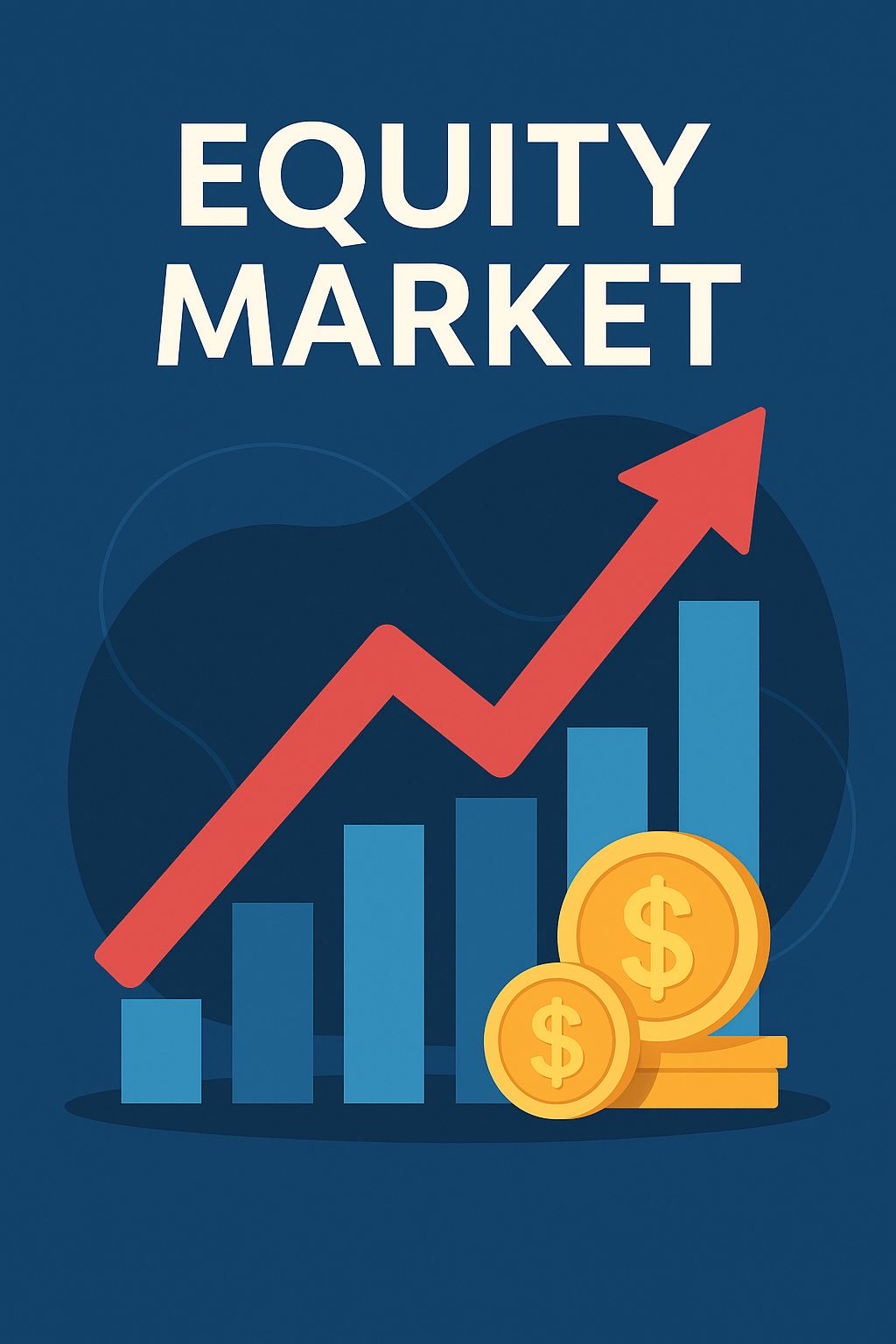
Risks and Rewards
Every investment carries risk. Equity markets can be volatile, reacting sharply to interest rate changes, geopolitical tensions, or unexpected earnings results. In 2022, the S&P 500 dropped 19 percent due to rapid monetary tightening by the US Federal Reserve. However, patient investors who stayed invested saw strong rebounds in 2023 and 2024 as inflation cooled and rate cuts began.
Diversification remains the simplest form of risk management. Holding shares across sectors, geographies, and asset classes reduces exposure to any single event. ETFs and index funds help investors diversify instantly, providing access to hundreds of companies in one product.
The key to success is discipline. Avoid emotional trading, have a clear investment horizon, and remember that time in the market beats timing the market.
FAQs About the Equity Market
Q1. What is the difference between the stock market and the equity market?
They refer to the same concept, though “equity market” is broader. It includes all venues where company ownership is traded, not just listed stocks but also private equity and venture capital.
Q2. How do companies benefit from being listed?
Listing allows companies to raise funds for expansion, enhance their public profile, and offer liquidity to early investors or employees through share sales.
Q3. Is investing in equities suitable for beginners?
Yes, provided investors start small, diversify, and focus on long-term goals. Low-cost index funds or ETFs tracking major indices are good entry points for new participants.
The Big Picture
The equity market is more than a trading arena, it is a mirror of global progress. It funds innovation, reflects public confidence, and distributes wealth creation across society. From pension funds in London to startups in Singapore, its influence spans every economy.
Understanding how the equity market works empowers individuals to make better financial choices. It reminds us that behind every price chart lies a story of people, ideas, and growth. The more you learn about this system, the more clearly you see how your financial world connects to the wider economy.
Mini Glossary
Equity: Ownership interest in a company, represented by shares.
Shareholder: An individual or institution that owns shares in a company.
IPO (Initial Public Offering): The process through which a private company offers shares to the public for the first time.
Dividend: A cash payment made by a company to its shareholders, usually from profits.
Index: A statistical measure that tracks the performance of a group of stocks, such as the S&P 500 or FTSE 100.
Disclaimer: This material is for general information purposes only and is not intended as (and should not be considered to be) financial, investment or other advice on which reliance should be placed. No opinion given in the material constitutes a recommendation by EBC or the author that any particular investment, security, transaction or investment strategy is suitable for any specific person.
